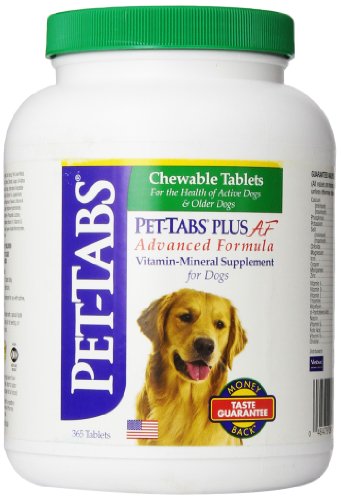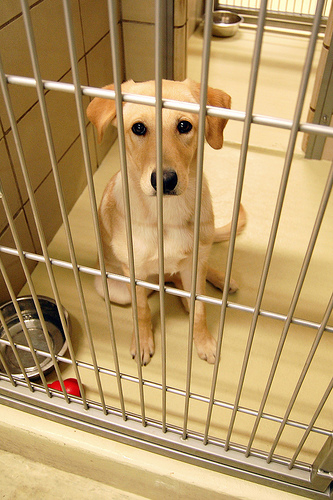
Our pet’s health is extremely important to us. As a result, we try to do everything possible to ensure that they do not get sick. One of the most important and effective ways to prevent infectious diseases is to vaccinate our furry friends on a regular basis. Many devastating diseases, such as rabies and canine distemper, are now almost completely preventable with the use of an appropriate vaccination protocol.
Puppies get their protection from diseases via their vaccinated mother’s milk. The puppies must suckle immediately after they are born to receive the optimal immunity to diseases, and this protection lasts for just a few weeks after they are weaned. Puppies must then be vaccinated at 8 weeks of age with the core vaccines, with boosters given at 12 and 16 weeks.
The vaccines given to puppies and adult dogs consist of core and non-core vaccines. The core vaccines are given to all dogs, and represent some of the more significant infectious diseases. These vaccines include: Rabies, Canine Distemper Virus, Adenovirus Type 2, Parainfluenza, and Canine Parvovirus. The non-core vaccines are catered more towards the lifestyle of the dog, meaning that their administration is dependent more on the risk of exposure to the disease. The vaccines that are available include: Bordatella bronchiseptica (Kennel Cough), Leptospirosis, and Borrelia burgdorferi (Lyme Disease).
The Rabies virus is transmitted by the bite of an infected animal, most commonly bats, raccoons, skunks, and foxes. It causes a fatal brain and spinal cord infection, and signs of disease can vary from depression and dementia to aggressiveness. The virus can be shed for up to 14 days before signs of infection are apparent. The virus can be shed by the infected animal for a variable length of time, ranging from days to months. This disease is not only fatal to the infected animal, but is a considerable public health issue because it can be transmitted in the same manner to humans. Vaccination against Rabies is generally required by law, and is done once at 16 weeks of age and then boostered once a year. Depending on public health regulations, new three-year vaccines may now be used by your veterinarian.
Distemper in dogs was once very common, but thanks to widespread vaccination, has now become quite rare and almost unheard of in vaccinated dogs. This virus affects multiple organ systems and can involve the brain. Again, signs of infection can vary and include discharge from the eyes and nose, coughing, vomiting, and diarrhea; neurological signs soon follow, progressing to trouble walking and seizures. Treatment is usually futile and the prognosis for survival is poor, which is why vaccination against this disease is so important. This vaccine is given at 8, 12, and 16 weeks, and then boostered once a year from then on.
Canine Adenovirus Type 2 is a component of a syndrome known as Kennel Cough, characterized by a hacking cough, wheezing, and difficulty breathing. This vaccine also protects against Infectious Canine Hepatitis, an often acutely fatal disease that causes destruction of the liver. This vaccine is given to puppies along with the other core vaccines at 8, 12, and 16 weeks of age, and then boostered yearly.
This virus causes a respiratory infection known as Canine Infectious Tracheobronchitis, and is another major component of Kennel Cough. It is acquired by close contact with other infected dogs, most commonly at boarding facilities, dog parks, and puppy classes. Signs to watch for include: coughing, gagging, and retching. This vaccine is given in combination with the other core vaccines at 8, 12, and 16 weeks of age, and then boostered once a year from then on.
Canine Parvoviral Enteritis is a serious and not uncommon disease in unvaccinated puppies. The virus destroys the cells in the intestines, causing vomiting, diarrhea, and intestinal bleeding. Immune suppression can also result when the virus infects the bone marrow. For some unknown reason, there is evidence that Doberman Pinchers, Rottweilers, Pit Bulls, and Labrador Retrievers are more susceptible to infection. The virus persists for a long time in its environment, and thrives in unsanitary conditions. The vaccine for Canine Parvovirus is given to puppies in combination with the other core vaccines at 8, 12, and 16 weeks, and then once yearly.
Bordatella bronchiseptica (Kennel Cough)
Bordatella is another component of the syndrome known as Kennel Cough, and should be administered to high risk dogs. This consists of dogs being boarded or attending puppy classes, and many facilities now require vaccination before the dog can be admitted. The vaccine can be given via a squirt in the nose or injected under the skin, and yearly boosters are recommended to maintain immunity.
Leptospirosis is a re-emerging disease of great importance in both rural and urban areas. It thrives when the climate is warm and moist, and as a result, is most common in the spring and fall. It is spread by contact with urine from infected “host species”, which can include: raccoons, skunks, mice, voles, cattle, and pigs. Dogs can come into contact with contaminated urine in their environment in the form of water dishes, shallow ponds or puddles. The disease can range from mild to fatal, often causing severe kidney failure and liver disease. Furthermore, the organism is transmissible to humans, and care must be taken to ensure all areas of possible contamination be disinfected. Vaccination for dogs with potential exposure is recommended because of the serious illness associated with this disease.
Lyme Disease is transmitted by the Deer Tick (Ixodes scapularis) that carries the organism in endemic areas. Signs of disease include arthritis, enlarged lymph nodes, and fever. Behavrioural changes and neurological signs may also be observed, including seizures. Consult your veterinarian to find out if Lyme Disease is important in your area, or if you are traveling to an endemic area with your dog.
 The Effects of Nicotine and Secondhand Smoke on Your Dogs
Credit: CDC (PHIL) - Public domain
The Effects of Nicotine and Secondhand Smoke on Your Dogs
Credit: CDC (PHIL) - Public domain
 Manners Versus Obedience In Dog Training
Most people who get a dog re
Manners Versus Obedience In Dog Training
Most people who get a dog re
 Mastiff Lovers & Dinosaur Poop!
Loving and Owning a MastiffG
Mastiff Lovers & Dinosaur Poop!
Loving and Owning a MastiffG
 Is it a Dog or a Bear?
For large dog breed lovers t
Is it a Dog or a Bear?
For large dog breed lovers t
 5 Tips To Reduce Shedding
5 Tips To Reduce Shedding
Dog hair everywhere? Do you feel
5 Tips To Reduce Shedding
5 Tips To Reduce Shedding
Dog hair everywhere? Do you feel
Copyright © 2005-2016 Pet Information All Rights Reserved
Contact us: www162date@outlook.com